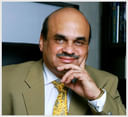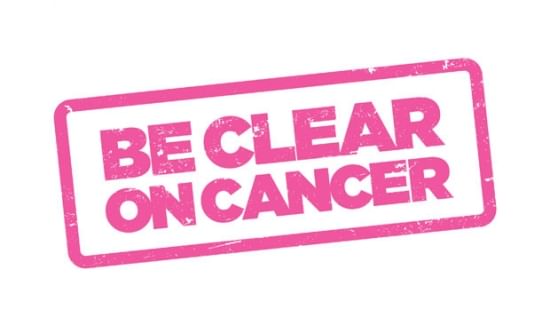Myths And Malpractices Related To Breast Cancer
These two words are enough to instil anxiety and assumptions in the minds of many. Replete with prejudices, myths and malpractices, this disease is more feared than managed or treated. For example, how often have women wondered if wearing a bra can cause breast cancer? How often have your spouse or a loved one talked themselves out of a diagnosis, because they were shy of the procedure, and also because they thought that there was no way they could have the disease? How often have they concluded that they need to get their breasts removed knowing a close blood relative had the disease or undergo an extremely painful chemotherapy regime if they were diagnosed with breast cancer?
Wondering and presuming these things isn’t their fault- it’s because of the general lack of awareness and hence, several myths the disease brings in its wake. In this section, we answer some of the most common myths surrounding breast cancer, in detail. It is of utmost importance to make women aware of these myths since this often leads to bad practices such as avoiding proper check-ups, which ultimately culminates into the delay in diagnosis treatment breast cancer, which can prove to be fatal.
Myth: Breast cancer risk is very low.
Fact: This misconception is one of the leading causes of a late diagnosis in India. Breast cancer is the most common cancer in Indian women, and according to the National Cancer Registry Program of India, it accounts for 27% of all cancer in women, as of 2012. About 1.5 lakh new cases are diagnosed every year of which, 0.75 lakh cases succumb to the disease within the 1st five years. India has the dubious distinction of having the highest incidence-to-mortality conversion in the world attributed to lack of awareness about symptoms, late-stage detection and poor treatment outcomes. In our country, this disease occurs at a much younger, premenopausal age, that is, the average age of around 45 in India as compared to 65 in the West. Approximately 1 in 22 Indian women carries a lifetime risk of developing the disease. Also, approximately 1 in 3 breast cancers will be identified as a triple negative breast cancer which is a aggressive breast cancer and is most prevalent in Indian women, compared to the 10-15% risk in other ethnicities.
Owing to the assumption that the risk is low and that cancer occurs at a much later age group, middle-aged women at a higher risk of breast cancer shy away from diagnosis and do not get annual mammograms done. In fact, according to a study carried out in Oldham, England in 2010, only 35% of Asian women were likely to attend the routine check-up done by National Health Service of England, as opposed to 70% of non-Asian women. The reasons behind shying away from getting an annual check-up done after 40 years of age could be ignorance, financial reasons, discomfort with the check-up procedure or anxiety of the reports. Regardless, this inertia in undergoing routine medically advised check-up of the breasts can result in missing an early diagnosis which then decreases the chances of effective treatment of the disease. At our clinic, we have seen cases where breast cancer has been diagnosed at a very early stage because the women underwent annual mammograms, and thus could be easily managed and cured. It is our humble request to all the women to break their inhibitions and get an annual breast check-up done under the supervision of a breast cancer expert after the age of 40.
Myth: If a woman is diagnosed with breast cancer, her breasts will be removed (mastectomized).
Fact: If breast cancer occurs, then there is 80% chance that the breasts will not be removed. Most women will have a single cancerous lump in their breast and the breast can always be saved by a well-planned, cosmetic surgery. Breast reconstruction is done in the same procedure with the same anaesthesia, resulting in better-looking breasts and cosmetics as they can be lifted and shaped according to the patient’s desire. A questionnaire conducted by our centre reported no depression and out of 147 patients surveyed, most were very satisfied with the reconstruction outcomes (94%). Mastectomy, or breast removal surgery, is performed in few percentages of patients- may be 20%, where there are multiple tumours. Therefore, it is of utmost importance that a woman does not fear the outcome of a diagnosis and delay getting examined altogether. Such bad practice can result in an advanced-stage breast cancer, which could have been diagnosed at an early stage and treated, now being treated by mastectomy, owing to the consequent delay in treatment.
Myth: General health check-ups are excellent for every diagnosis, including breast cancer.
Fact: This is one of the biggest and most dangerous myths. General health check-ups cannot diagnose any cancer, let alone breast cancer. Therefore it is pivotal for a woman to get a mammogram and clinical breast examination done at a specialized breast health centre, under the care of specialists and professionals. National expert panels do not recommend general health check-ups. The Canadian Task Force on the Periodic Health Examination as well as the United States Preventative Service Task Force, recommended focused health checks, as opposed to general ones, in 1979 and 1989, respectively. One review published in the Cochrane Library by Krogsbøllet al. in 2012 reported that “general health checks did not reduce morbidity or mortality, neither overall nor for cardiovascular or cancer causes”, based on the trials that they conducted. According to an article published in 2015, in which a joint analysis was undertaken by medical liability insurers (Doctors Co. and CRICO, USA), amongst the 562 malpractice claims between 2009 to 2014, 39% related to the alleged negligent treatment of patients, including misinterpretation of diagnostic studies in general health check-up schemes.
In general, it is believed that about 48% of the delayed-diagnosis cases involved radiology, with primary care physicians or other clinicians have misread or misinterpreted the radiology report. General health check-ups is also a scheme by hospitals to pick up patients for treatment, with surgeons performing open breast biopsies (i.e, a surgical procedure where a cut is made through the skin to expose and remove tissues), which is an obsolete diagnostic modality for breast cancer. In fact, in America, according to sources, a doctor doing an open breast biopsy is liable to lose his registration. The biopsies should be done after careful radiological investigation and are only minimally invasive needle biopsies. Due to such myths and malpractices, women are afraid to present themselves for diagnosis, because they fear that every lump will be removed with a surgery. The fact is that out of 100 women presented with lumps, maybe 1 or 2 actually need a surgery.
Myth: Chemotherapy and radiation therapy should be avoided as they are extremely painful.
Fact: Both these types of therapies have been exaggerated to be ‘worse than death itself’. This is absolutely not true. Chemotherapy has improved leaps and bounds with drugs that are much easier to tolerate as they are targeted, which means that they predominantly affect the cancer cells and not the normal ones. Earlier, the known side effects of chemotherapy were nausea, vomiting, reduction of blood counts, and infections. Today with current improvements in the drugs with chemotherapy as well as antidotes against complications, chemotherapy has become extremely safe and the side effects have substantially reduced. In fact, some determined women take chemo and go to work. The only major, common side effect of chemotherapy as of today is the hair loss which is a temporary and reversible phenomenon A daycare facility is extremely proficient with the treatment, with most of the regimens needing just 5 hours or less. Many hospitals admit patients for chemotherapy, more for financial gains than an actual need for inpatient admission procedures. At our facility, chemotherapy is a procedure requiring maximum 5 hours, with loungers and personalized TVs, a counsellor and a nutritionist for free, private consultation in a spa-like ambience.
There are fewer side-effects of radiotherapy as well if done by adept radiotherapists and physicists with extremely sophisticated and state-of-the-art equipment. Both these procedures are extremely safe, with the woman not even needing hospitalization.
Myth: Wearing a bra, antiperspirants and deodorants can cause breast cancer.
Fact: It is due to the existence of these myths that the focus has been shifted from the actual risk factors to such obsolete ones. None of the aforementioned items has been shown to cause breast cancer. The real risk factors leading to breast cancer are of two types: the modifiable and the non-modifiable. The modifiable risk factors include alcohol, smoking, sedentary lifestyle, obesity, birth control pills, hormone replacement therapy, not breastfeeding and not having children or having them late. The non-modifiable ones include genetics, having a family history of breast cancer, older age, exposure to radiation, race and ethnicity, early menarche and late menopause. Most of the modifiable risk factors can be avoided if one took care of their health, diet and got sufficient exercise.
Myth: If a woman has a family history of breast cancer, she is likely to develop breast cancer as well.
Fact: While it is true that women who have a family history of breast cancer are at a higher risk of getting the disease, it is also true that most women who have breast cancer have no family history of the disease. Statistically, only 10% of the women diagnosed with breast cancer have a family history.
So what should you do if you have a family history of this disease?
That depends on your relation to that particular family member.
If you have a first-degree relative with breast cancer, that is, if your mother, sister or daughter developed breast cancer under the age of 50, you should consider some form of regular diagnostic breast imaging as well as genetic testing.
When should you consider it?
Starting ten years before the age of your relative’s diagnosis.
Having a first-degree male relative with breast cancer- however rare, but a clinically observed phenomenon also raises a woman’s risk of getting breast cancer.
If you have a second-degree relative with breast cancer, such as a grandmother or an aunt, your risk increases moderately, however, definitely not as much if you had a first-degree relative with breast cancer.
If you have multiple generations diagnosed with breast cancer on the same side of the family, or if there are several individuals who are first-degree relatives to one another or several family members diagnosed at the age of 50, you should be careful, as you have an increased probability of having a defective breast cancer-causing gene, given your breast cancer-prone family history.
In such scenarios, you should consult with a breast cancer specialist and undergo appropriate genetic testing only after prior genetic counselling of the family.



+1.svg)
